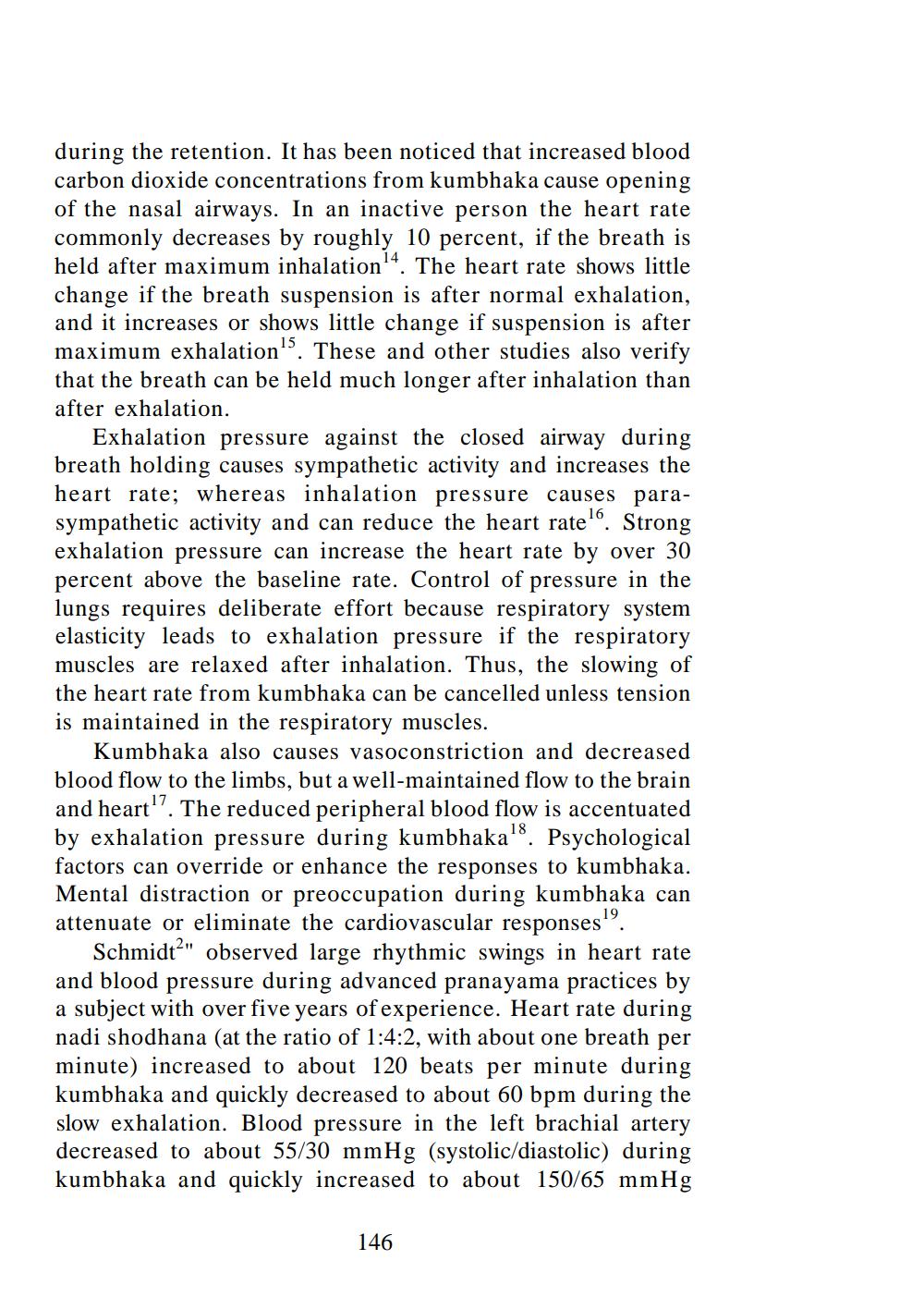________________
during the retention. It has been noticed that increased blood carbon dioxide concentrations from kumbhaka cause opening of the nasal airways. In an inactive person the heart rate commonly decreases by roughly 10 percent, if the breath is held after maximum inhalation't. The heart rate shows little change if the breath suspension is after normal exhalation, and it increases or shows little change if suspension is after maximum exhalation. These and other studies also verify that the breath can be held much longer after inhalation than after exhalation.
Exhalation pressure against the closed airway during breath holding causes sympathetic activity and increases the heart rate; whereas inhalation pressure causes parasympathetic activity and can reduce the heart rate. Strong exhalation pressure can increase the heart rate by over 30 percent above the baseline rate. Control of pressure in the lungs requires deliberate effort because respiratory system elasticity leads to exhalation pressure if the respiratory muscles are relaxed after inhalation. Thus, the slowing of the heart rate from kumbhaka can be cancelled unless tension is maintained in the respiratory muscles.
Kumbhaka also causes vasoconstriction and decreased blood flow to the limbs, but a well-maintained flow to the brain and heart". The reduced peripheral blood flow is accentuated by exhalation pressure during kumbhaka8. Psychological factors can override or enhance the responses to kumbhaka. Mental distraction or preoccupation during kumbhaka can attenuate or eliminate the cardiovascular responses
Schmidt?" observed large rhythmic swings in heart rate and blood pressure during advanced pranayama practices by a subject with over five years of experience. Heart rate during nadi shodhana (at the ratio of 1:4:2, with about one breath per minute) increased to about 120 beats per minute during kumbhaka and quickly decreased to about 60 bpm during the slow exhalation. Blood pressure in the left brachial artery decreased to about 55/30 mmHg (systolic/diastolic) during kumbhaka and quickly increased to about 150/65 mmHg
146




